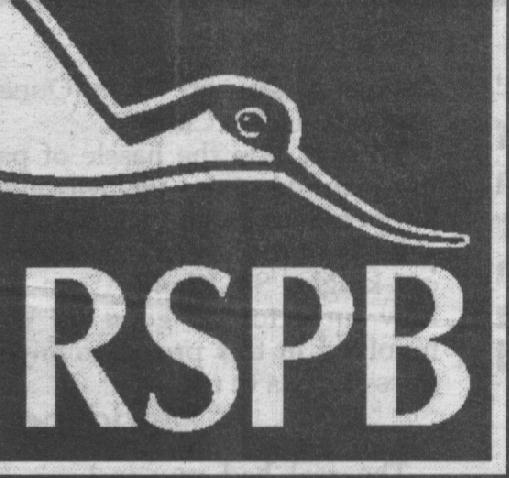|
In January, the potential for cold hard frosts
and a covering
of snow puts great importance on feeding to aid the survival of
birds through to the spring. It can also increase the number of
species visiting our North Lanarkshire gardens, just in time for
our annual, nation-wide Big Garden Bird Watch survey, which
takes place on the weekend of the 25th and 26th of January.
All you need to do is spend one hour watching the birds in your
garden, local park or school, then tell us the largest of each species
you see at any one time. No experience is necessary and all results
provide vital information about garden bird populations. You will
help to build up an important picture of how well our common birds
are doing and you never know what you might see! There are
several ways to get involved.
On the web
Enter your results directly onto our website
at:-
www.rspb.org.uk/birdwatch
By phone
Please ring 0141 576 2617 to find out where you
can pick up a
form locally or get one posted out to you.
At school
Schools can take part in the survey in the week
before and after.
Remember you do not have to have a garden to take part. Any
park, woodland or RSPB Scotland reserve, anywhere will do.
The results of this year's survey will be summarised on our website
and in our membership magazines. A special schools pack is
available, please contact us for details.
When and what to feed the birds in your garden.
Remember that particularly at this time of year,
a wasted journey
to your bird table is wasted energy for birds, something that they
cannot afford during cold weather. So once you start putting out
food, keep doing so as they start to rely on that food source.
Excellent energy giving food includes peanuts, labelled as safe
harmful aflatoxins, cheese, cooked rice, bacon rind, mealworms,
cake, oats, sunflower seeds, dried or fresh fruit, suet, and fresh
coconut.
TIP. Never use salted peanuts or desiccated coconut.
Bird cake is made by pouring melted fat (suet
or lard) onto seed,
nuts, dried fruit, oatmeal or cake. Use about one third fat to two
thirds food. Stir well in a bowl and let the mix solidify. An empty
coconut shell makes an ideal bird cake feeder, especially attractive
to blue, great and coal tits.
RSPB shops and local garden centres stock a wide
range of
peanut and seed feeders, some which are squirrel proof. Blue tits,
great tits, and coal tits will be attracted by feeders, robins,
finches
and thrushes to tables, while dunnocks, wrens, and treecreepers
often pick up the bits below. The cold weather can often attract
great spotted woodpeckers and wintering blackcaps to the peanut
feeder. Always provide clean water. An upturned old dustbin lid
is
ideal. Never use ant antifreeze products in the water.
TIP. Keep an area of water ice-free by floating a small
ball on
the surface.
January is the month when tawny owls become noticeably
more
active and vocal as they begin to establish territories for the
coming
breeding season. The commonest and most widespread of our
British owls, tawny owls are totally nocturnal, their daytime roosts
sometimes given away by the frenzied alarm calls of small birds
as
they mob the seemingly oblivious owl. A 12th Century tale suggests
why owls are nocturnal. As one had stolen a rose which was a prize
given for beauty, the other birds punished it by allowing it to
come
out only at night. Among many other folk cures, alcoholism was
often treated with an owl egg! The call is well known, though the
word hooting scarcely does justice to a sound that is short but
so musical, far carrying and atmospheric. The hoot of the male,
in effect saying "this is my patch keep out" is often
answered by the
ke-wick of the female, usually its mate. As hooting is very
infectous, often once one begins, so several others follow, definitely
not just one voice singing in the darkness! It is therefore very
apt
that the collective noun for a group of owls is a parliament. Any
male that is foolish enough not to put his best efforts in, is inviting
another to seize an apparently unclaimed territory. The young, on
average 2 or 3, are extremely cute and covered in down when
first fledged and may be visible in daylight, as they do not venture
far from the nest. The best givaway in mid June onwards, is a
noticeable area of droppings, usually under a mature broad-leaved
tree. They have a squeak like gentle call, as if made through pursed
lips and clenched teeth. Be warned, the female can be extremely
aggressive in protecting her young. Any area with mature trees can
provide a home for tawny owls, listen out for them especially
around parks and mature woodland around Cumbernauld and
Kilsyth. So brave these cold January nights, step outside for a
while, and see how many you can hear.
RSPB Scotland Forth Valley local group have indoor meetings
and talks in The Cowane Centre, Stirling. For further information
contact Etta Payne on 01324 711610, everyone will be most
welcome.
RSPB Scotland Glasgow local group have group outings and
indoor meetings held in Woodside Halls, Clarendon St, off
Maryhill Road. For further information contact Jim Coyle on
0141 579 7565.
RSPB Scotland works for a healthy environment rich in birds
and other wildlife. We depend on the support and generosity
of others to make a difference . If you would like to support our
work, please join the Society.
Phone: 0141 576 2617
Email: glasgow@rspb.org.uk
Website: http://www.rspb.org.uk
Mark Davies, Community Liaison Officer
RSPB, South and West Scotland.
|

